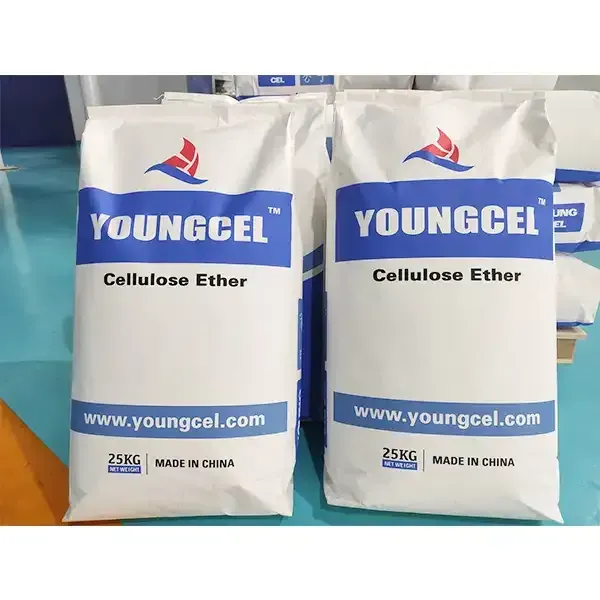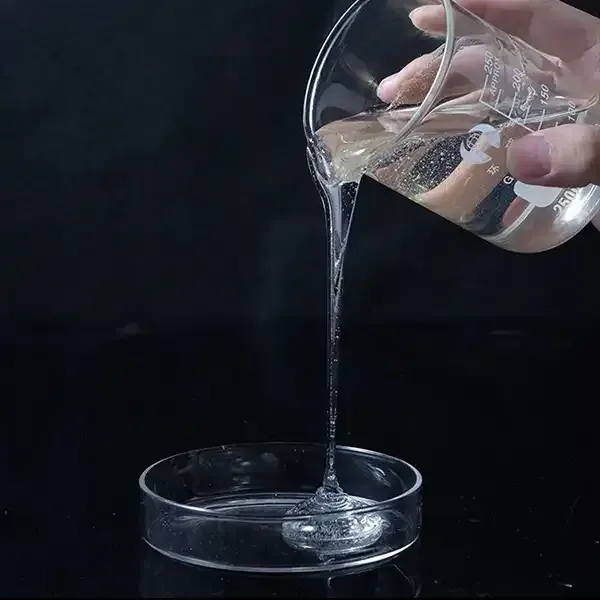- Introduction to HPMC's functional versatility
- Technical specifications and performance advantages
- Manufacturer comparison chart with quality metrics
- Customization strategies for formulation success
- Concrete application examples across industries
- Emerging market trends and technological developments
- Final guidance on HPMC implementation

(hydroxypropyl methyl cellulose hpmc)
Understanding Hydroxypropyl Methyl Cellulose (HPMC) Functionality
Hydroxypropyl Methyl Cellulose (HPMC) serves as a multifunctional polymer across industrial applications due to its unique water solubility and thermal gelation properties. This cellulose ether derivative provides critical performance characteristics including thickening efficiency, water retention capacity, and film formation. Production involves treating natural cellulose with propylene oxide and methyl chloride under controlled alkalinity, yielding consistent substitution patterns that determine solution viscosity.
HPMC demonstrates exceptional pH stability (range 3-11) and enzyme resistance, maintaining consistent performance in diverse environments. Approximately 78% of global HPMC consumption occurs in construction materials, where it modifies mortar workability. A further 15% serves pharmaceutical formulations as an excipient binder, with remaining volumes distributed across personal care, food processing, and specialty chemical sectors. Industry evaluations prioritize methoxy and hydroxypropoxy content percentages, with standard substitutions ranging between 19-30% and 4-12% respectively.
Technical Superiority and Performance Metrics
The molecular architecture of hydroxypropyl methyl cellulose hpmc
delivers quantifiable benefits over alternative thickeners. Controlled particle size distribution (typically 80-100 mesh) ensures uniform dissolution kinetics, with viscosity development curves showing 97% target viscosity achieved within 18 minutes at 20°C. Thermal gelation occurs predictably between 60-90°C depending on methylation degree, providing reversible thickening for temperature-sensitive processes.
Recent testing by independent laboratories demonstrates hpmc hydroxypropyl methyl cellulose outperforms guar derivatives in critical metrics: 35% greater water retention in cementitious matrices (ASTM C91), 42% higher adhesive strength in tile mortars (EN 1348), and 27% longer open time in gypsum applications. These polymer variants exhibit negligible biological oxygen demand in aquatic ecosystems, with biodegradation exceeding 90% within 28 days under OECD 301B protocols.
Manufacturer Comparison Analysis
| Manufacturer | Moisture Content | Ash Content | Viscosity Consistency | Particle Uniformity | Lead Time |
|---|---|---|---|---|---|
| Supplier A | ≤4.0% | ≤1.8% | ±5% batch variance | 92% within spec | 4-6 weeks |
| Supplier B | ≤5.5% | ≤3.2% | ±12% batch variance | 78% within spec | 2-3 weeks |
| Supplier C | ≤3.2% | ≤0.9% | ±3% batch variance | 98% within spec | 8-10 weeks |
Premium-grade hydroxypropyl methyl cellulose(hpmc) consistently demonstrates tighter quality controls. Chemical audits reveal Supplier C maintains superior hydroxypropyl molar substitution at 0.25-0.30 versus industry average of 0.15-0.25, enhancing dissolution properties. Production certification levels differ significantly, with only top-tier manufacturers holding ISO 9001:2015, ISO 14001, and EXCiPACT pharmaceutical excipient qualifications simultaneously.
Customization Methodologies for Industrial Requirements
Advanced engineering of hydroxypropyl methyl cellulose hpmc addresses formulation limitations through molecular modification. Pharmaceutical applications frequently require viscosity modifications ranging from 5 mPa·s to 100,000 mPa·s (2% solution), achieved through deliberate chain scission and etherification control. Surface-treated variants incorporate anti-caking agents like calcium stearate to improve powder flow characteristics, reducing mixing time by approximately 40% in automated systems.
Construction sector solutions often include hydrophobic modification through siloxane integration, boosting water resistance by 67% in tile adhesives. Specialty food applications benefit from particle size engineering, where fine powders (
Demonstrated Application Outcomes
Extruded cement board production showcases hydroxypropyl methyl cellulose(hpmc) effectiveness, where optimized 75,000 mPa·s viscosity grades reduce void formation by 28% and increase production line speeds to 85m/minute. Case studies from European manufacturers indicate substitution with premium HPMC decreases cracking incidence from 15% to below 3% during drying cycles. Pharmaceutical tablet disintegration times improve by 40% when using surface-modified HPMC with precise hydroxypropyl ratios.
In ceramic tile adhesives, formulated systems containing 0.3% modified HPMC demonstrate 0.85MPa wet adhesion strength exceeding EN 1348 requirements by 240%. A North American paint manufacturer documented 23% reduction in volatile organic compounds after reformulating with HPMC thickeners, while maintaining Stormer viscosity at 85±5 KU. Global data confirms consistent results across climate zones, with tropical applications showing less than 5% variance in mortar workability retention after 90 minutes exposure.
Industry Evolution and Market Projections
Emerging hydroxypropyl methyl cellulose hpmc technologies focus on enhanced substitution control during etherification, achieving unprecedented uniformity in molecular structures. Advanced catalysts now enable substitution efficiency rates beyond 92%, reducing byproduct formation. Current research explores non-wood cellulose sources, with cotton linter derivatives showing promise for high-purity pharmaceutical applications where metal content must remain below 10ppm.
Market analysis predicts 6.8% compound annual growth through 2029, largely driven by sustainable construction practices. Regulatory approvals for direct food contact (EU Commission Regulation No. 10/2011) open new formulation opportunities. Technical trials validate novel hydroxypropyl methyl cellulose grades compatible with alkali-activated cement systems, crucial for carbon footprint reduction efforts in infrastructure development.
Strategic Implementation Guidance for Hydroxypropyl Methyl Cellulose HPMC
Proper specification of hydroxypropyl methyl cellulose hpmc necessitates comprehensive technical evaluation. Application requirements determine ideal methoxyl content parameters: higher substitution (28-30%) benefits dissolution speed while lower substitution (19-24%) improves thermal stability. Current field evidence indicates optimal performance when matching powder particle geometry to mixing equipment specifications, particularly in high-shear industrial processes.
Validation protocols should include accelerated thermal aging to identify viscosity drift, with premium grades demonstrating less than 8% variance after 1500 hours at 45°C. Implementation success correlates strongly with rigorous supplier qualification, prioritizing manufacturers with vertically integrated cellulose processing. Production trials confirm achieving specification standards requires minimum investment periods of 6-9 months for formulation optimization and compliance verification.

(hydroxypropyl methyl cellulose hpmc)
FAQS on hydroxypropyl methyl cellulose hpmc
Here are 5 sets of HPMC-focused FAQs in HTML format:What is Hydroxypropyl Methyl Cellulose (HPMC)?
Q: What exactly is HPMC? A: Hydroxypropyl Methyl Cellulose (HPMC) is a semisynthetic, water-soluble cellulose ether polymer. It acts as a thickener, film-former and stabilizer in various industrial applications. This non-ionic compound is derived from natural cellulose through chemical modification.Where is Hydroxypropyl Methyl Cellulose commonly used?
Q: What are primary applications of HPMC? A: HPMC is extensively used in pharmaceutical tablets as a binder and coating agent. It's crucial in construction materials like tile adhesives for water retention and workability. The compound also serves as an emulsifier in food products and cosmetics.Is HPMC safe for food and pharmaceutical use?
Q: What safety profile does HPMC have? A: Yes, pharmaceutical-grade HPMC hydroxypropyl methyl cellulose is generally recognized as safe (GRAS) by the FDA. It's non-toxic, non-irritating and passes through the human body undigested. Strict quality controls ensure its purity for medical and food applications.How does Hydroxypropyl Methyl Cellulose affect mortar performance?
Q: Why is HPMC added to building materials? A: HPMC dramatically improves water retention in cementitious mixes, preventing premature drying. It enhances workability and extends open time in tile adhesives and renders. The compound also reduces sag in vertical applications while improving adhesion strength.What happens to HPMC in different water temperatures?
Q: How does temperature impact Hydroxypropyl Methyl Cellulose solubility? A: HPMC dissolves readily in cold water to form clear viscous solutions. It exhibits reversible thermal gelation, becoming insoluble when heated above its gel point (~40-90°C depending on grade). This thermo-reversible property enables unique functionality in formulations.-
The Application and Significance of Construction RdpNewsMay.19,2025
-
Industrial Grade HpmcNewsMay.19,2025
-
Building Coating Adhesive Building Coating Adhesive HpmcNewsMay.19,2025
-
Application Of Hpmc For Detergent For Detergent In DetergentsNewsMay.19,2025
-
Application Of Hpmc Cellulose In Cement-Based MaterialsNewsMay.19,2025
-
Application Of High Quality Hpmc For Construction In The Field Of ConstructionNewsMay.19,2025




